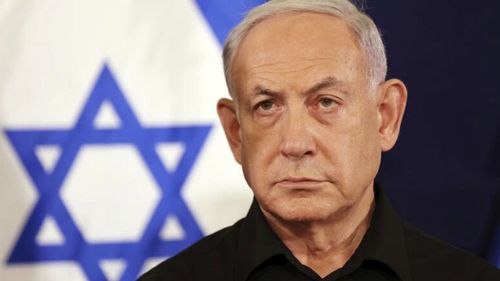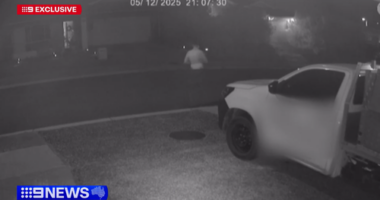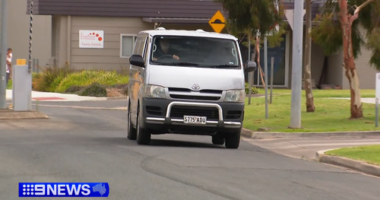Share this @internewscast.com
Israel’s cabinet has given the green light to President Donald Trump’s proposal for a ceasefire in the Gaza Strip, aiming to secure the release of all hostages still under Hamas’ control. This marks a significant stride towards concluding a devastating two-year conflict that has unsettled the Middle East.
A concise statement from Prime Minister Benjamin Netanyahu’s office confirmed that the cabinet consented to the general framework of a deal to liberate the hostages, although the statement avoided discussing other contentious parts of the plan.
An Israeli official, who requested anonymity as stipulated by regulations, indicated that the ceasefire is expected to commence immediately following government endorsement.

The Israeli military now has 24 hours to pull back its forces to an agreed-upon line.
The broader ceasefire plan includes many unanswered questions, such as whether and how Hamas will disarm and who will govern Gaza.
However, both parties seemed nearer than in the recent past to ending a war that has resulted in the deaths of tens of thousands of Palestinians, turned much of Gaza into ruins, caused famine in parts of the area, and left numerous hostages, both alive and deceased, in Gaza.
The conflict initiated by Hamas’ lethal assault on Israel on October 7, 2023, has also ignited additional regional hostilities, set off global protests, and led to accusations of genocide, which Israel refutes.
Some 1200 people were killed in the Hamas-led assault, and 251 were taken hostage.
During Israel’s subsequent military campaign, the Gaza Health Ministry reports that over 67,000 Palestinians have perished in Gaza and approximately 170,000 have been injured, without distinguishing between civilians and fighters, although it claims about half of the fatalities were women and children.

In the hours leading up to the Israeli cabinet’s vote, Israeli strikes continued.
Explosions were seen on Thursday in northern Gaza, and a strike on a building in Gaza City killed at least two people and left more than 40 trapped under rubble, according to the Palestinian Civil Defence.
A senior Hamas official and lead negotiator made a speech on Thursday laying out what he says are the core elements of the ceasefire deal: Israel releasing around 2000 Palestinian prisoners, opening the border crossing with Egypt, allowing aid to flow and withdrawing from Gaza.
Khalil al-Hayya said all women and children held in Israeli jails will also be freed. He did not offer details on the extent of the Israeli withdrawal from Gaza.
Al-Hayya said the Trump administration and mediators had given assurances that the war is over, and that Hamas and other Palestinian factions will now focus on achieving self-determination and establishing a Palestinian state.
“We declare today that we have reached an agreement to end the war and the aggression against our people,” Al-Hayya said in a televised speech on Thursday evening.
To help support and monitor the ceasefire deal, US officials said that they would send about 200 troops to Israel as part of a broader, international team. The officials spoke on condition of anonymity to discuss details not authorised for release.

In the southern Gaza city of Khan Younis, reactions to the announcement of a ceasefire were relatively muted and often colored by grief.
“I am happy and unhappy. We have lost a lot of people and lost loved ones, friends and family. We lost our homes,” said Mohammad Al-Farra. “Despite our happiness, we cannot help but think of what is to come. … The areas we are going back to, or intending to return to, are uninhabitable.”
In Tel Aviv, families of the remaining hostages popped champagne and cried tears of joy after Trump announced the deal.
In Jerusalem on Thursday, Sharon Canot celebrated with some others.
“We are so excited this morning. We cried all morning,” she said.
“It’s been two years that we are in horror.”

Under the terms, Hamas intends to release all living hostages in a matter of days, while the Israeli military will begin a withdrawal from the majority of Gaza, people familiar with the matter told The Associated Press.
They spoke on condition of anonymity to discuss details of an agreement that has not fully been made public. Some 20 of the 48 hostages still in captivity are believed to be alive.
In a short video posted by US Commerce Secretary Howard Lutnick, Trump was seen speaking by phone to a group of elated hostage families.
“They are all coming back on Monday,” said Trump, who is expected to visit the region in the coming days.
The deal, which was expected to be signed in Egypt, will include a list of prisoners to be released and maps for the first phase of an Israeli withdrawal to new positions in Gaza, according to two Egyptian officials briefed on the talks, a Hamas official and another official.
Israel will publish the list of the prisoners, and victims of their attacks will have 24 hours to lodge objections.
The withdrawal could start as soon as Thursday evening, said the officials, who spoke on condition of anonymity because they were not authorised to be publicly named speaking about the negotiations.
The hostage and prisoner releases are expected to begin on Monday, the officials from Egypt and Hamas said, though the other official said they could occur as early as Sunday night.
Five border crossings would reopen, including the Rafah crossing between Gaza and Egypt, the Egyptian and Hamas officials said.

Tom Fletcher, the UN humanitarian chief, told reporters that officials have 170,000 metric tons of medicine, aid and other supplies at the ready for transport into Gaza when they are given a green light.
The Trump plan calls for Israel to maintain an open-ended military presence inside Gaza, along its border with Israel.
An international force, composed largely of troops from Arab and Muslim countries, would be responsible for security inside Gaza.
The U.S. would lead a massive internationally funded reconstruction effort.
The plan also envisions an eventual role for the Palestinian Authority â something Netanyahu has long opposed. But it requires the authority, which administers parts of the West Bank, to undergo a sweeping reform program that could take years.
The Trump plan is even more vague about a future Palestinian state, which Netanyahu firmly rejects.











